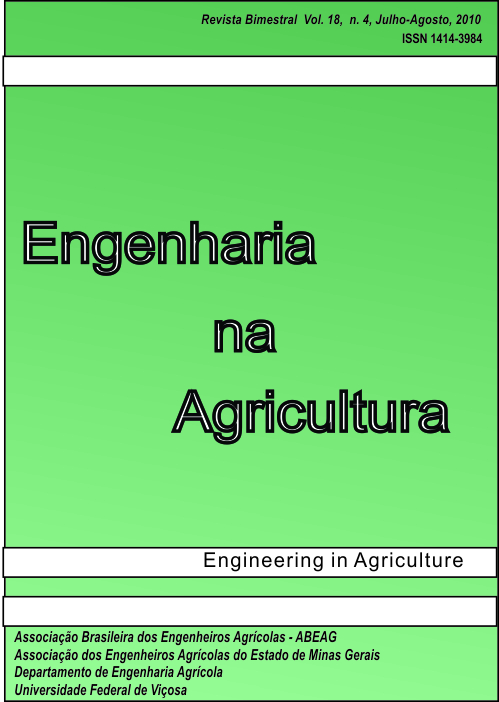RATE OF LEAF APPEARANCE AND ELONGATION OF XARAES GRASS UNDER DIFFERENT MANAGEMENT, FERTILIZATION LEVELS, REST PERIOD AND ANNUAL SEASONS
DOI:
https://doi.org/10.13083/reveng.v18i4.151Keywords:
aspersão em linha, Brachiaria brizantha, fertirrigação, morfogêneseAbstract
The objective of is study was to analyze the effects of different management, fertilizer level, rest period and annual seasons on the morphogenetic characteristic of the Xaraes grass. The study was done in a completely randomized split-split-plot design, with four replications, with plots in 2 x 2 factorial, two annual seasons (winter and summer) and two fertilizing managements (conventional and fertigation), four rest periods in the split-plots (21, 28, 35 and 42 days) and six fertilizer levels in the split-split-plots (0, 15, 39, 64, 83 and 100% of the dose of 700 N and 560 kg K2O). The morphogenesis characteristics were evaluated through the leaf appearance rate (LAR), leaf elongation rate (LER) and stem elongation rate (SER). The effect of the rest period on morphogenesis characteristics was dependent on the management, fertilizer level and the annual seasons. Morphogenesis characteristic means were higher during the summer season. The fertilization management did not affect the evaluated parameters and the increase of the fertilizer rate increased LAR and LER.Downloads
Downloads
Published
How to Cite
Issue
Section
License
Authors who publish with this journal agree to the following terms:
The author(s) authorize(s) the publication of the text in the journal;
The author(s) ensure(s) that the contribution is original and unpublished and that it is not in the process of evaluation by another journal;
The journal is not responsible for the views, ideas and concepts presented in articles, and these are the sole responsibility of the author(s);
The publishers reserve the right to make textual adjustments and adapt texts to meet with publication standards.
From submission, the author is fully conceding the paper's patrimonial rights to the publication, but retaining the owner of its moral rights (authorship and paper's identification) according to Creative Commons Attribution-Noncommercial.








 Licensed by
Licensed by 